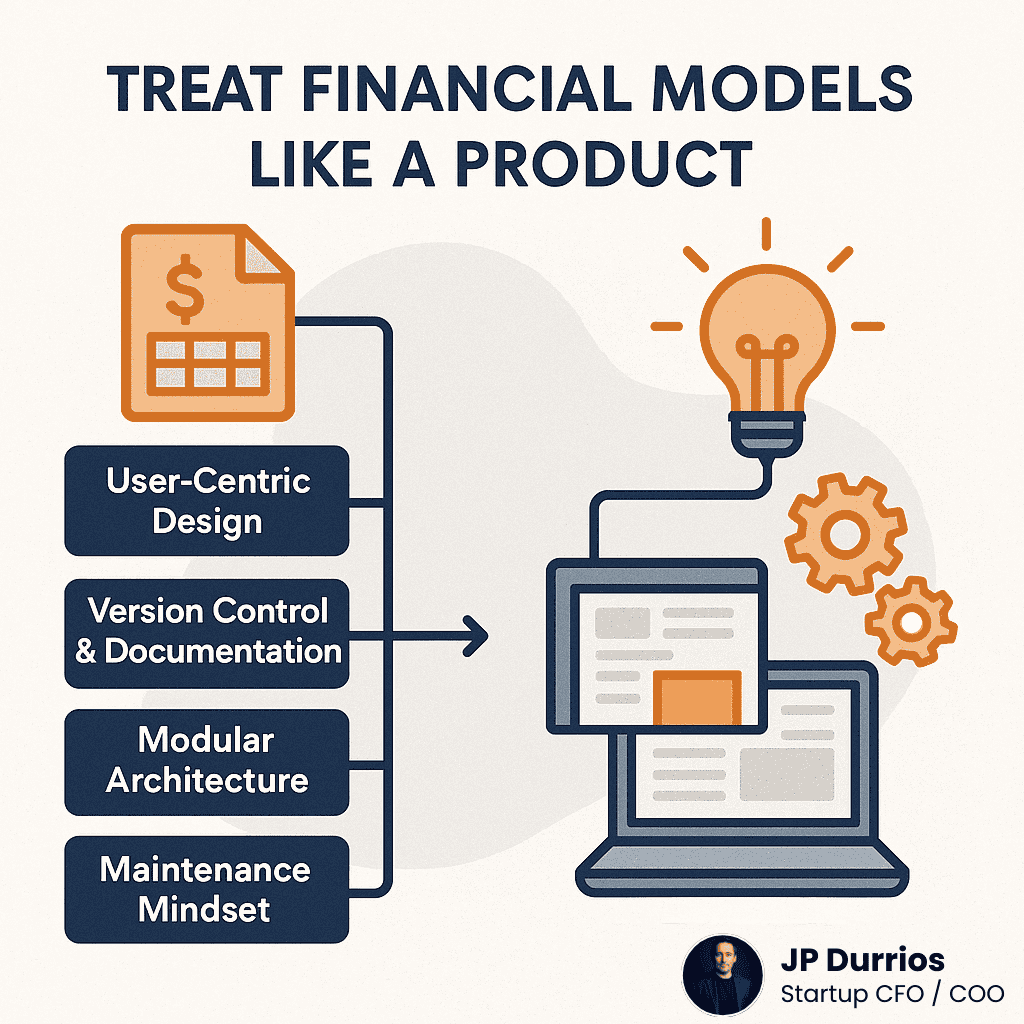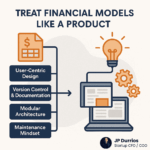There is no reason why they shouldn’t be, regardless of platform. Financial models aren’t just static spreadsheets or app setups; they’re products with users and lifecycles.
Modern FP&A teams should expect their models to have a short shelf life, especially in a startup growth environment.
The good news is that you can get inspired by your product management and engineering colleagues and treat your financial model like an evolving product:
1️⃣ Consider stakeholders as your internal customers. Solicit their feedback and iterate. Just as a product team releases updates based on user input, refine your model continuously to meet business needs.
2️⃣ Engineers use version control and comment on their code. FP&A should track model versions meticulously and document assumptions and logic. This prevents the classic “which version is correct?” chaos and helps onboard new team members quickly.
3️⃣ Good software is modular and scalable. Likewise, build models in well-organized blocks (assumptions, calculations, outputs) so you can update one piece without breaking the whole. A modular model scales with complexity as the company grows.
4️⃣ A product requires ongoing upkeep; likewise, a financial model needs regular updates and quality checks. You should also assess when a total rebuild is needed.
Shifting your FP&A team to a product mindset will lead to a more accurate model, stronger engagement from your internal stakeholders, and ultimately, better decisions as you scale the business.
Would you agree? How are you keeping your models fresh and relevant at scale?








